If you want to explore the history of South Africa through the ages there are a number of historical monuments in South Africa including the time-honored buildings, palaces, and parks where you can learn about the glorious past of South Africa. The presence of these monuments will take you on a walk through the country’s rich history. If you are willing to have in-depth historical information about South Africa, we recommend that you take a wonderful guided tour to cover the major historical attractions. Also, check the opening and closing time for each so that you can organize your time. Make sure that you go through the complete list of historical sites in South Africa for a great trip:
List of Famous Monuments in South Africa
1.Nkosi Albert Luthuli Statue, KwaDukuza
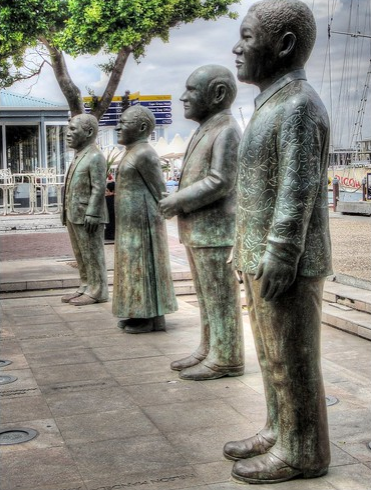
Nkosi Albert Luthuli Statue, KwaDukuza
Albert Luthuli’s memorial pays homage to one of Africa’s most respected leaders. His political activism was so important to the struggle that he was awarded the Nobel Peace Prize in 1960. This popular monument in South Africa comprises a bronze figure of Albert Luthuli, a wall featuring two bronze elements and, underneath the historic Indaba Tree, a bench, all set in a landscaped environment.This can be found at the KwaDukuza Municipal Chambers in KwaZulu-Natal and was unveiled in 2004. Luthuli’s home in KwaDukuza, formerly known as Stanger, was a meeting place for people linked to South Africa’s freedom struggle during the years of Luthuli’s banishment. It was also proclaimed a museum in August 2004.
Address: Nkosi Albert Luthuli Statue, KwaDukuza, SA.
Also Read:Monuments in USA
2. Mahatma Gandhi statue, Pietermaritzburg
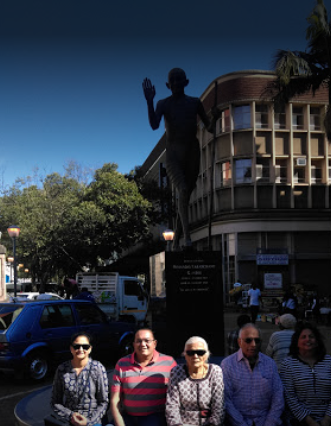
Mahatma Gandhi statue
The bronze statue of Mahatma Gandhi in Pietermaritzburg was unveiled a century after he was thrown off a train in the town’s train station. The events of the night of 7 June 1893 changed the course of Mahatma Gandhi’s life, and would lead to his becoming the Mahatma. Plying his profession as a lawyer, the young Indian had come to South Africa for work. On the night, he was travelling from Durban to Johannesburg and had a first class ticket for the train. But he was told to leave the European compartment to go to the third class section, where non-white passengers sat. He was thrown off the train at the Pietermaritzburg Railway Station when he refused to do so. Gandhi’s movement for peaceful resistance to oppression and racial discrimination began that night. It would go on to have a significant and sustained impact around the world. To honour his activism, in June 1993 – a century later – Archbishop Desmond Tutu unveiled this famous monument in South Africa depicting Gandhi in Church Street, Pietermaritzburg.
Address: Mahatma Gandhi statue, Pietermaritzburg, SA.
Don’t Miss:10 best restaurants in South Africa
3. Solomon Mahlangu Statue, Mamelodi
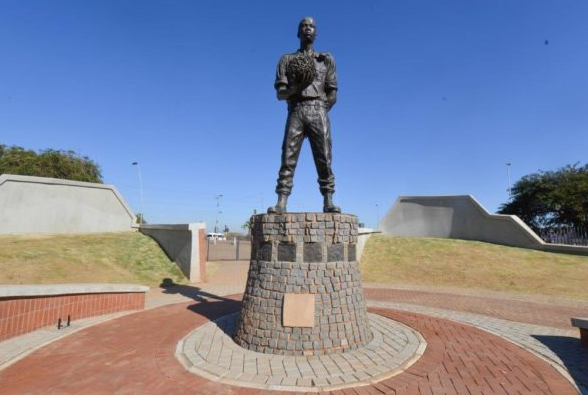
Solomon Mahlangu Statue, Mamelodi
Anti-apartheid activist, Solomon Mahlangu, was just 23 years old when he was hanged in the gallows of Pretoria Central Prison. His remains were only moved to his birthplace of Mamelodi in 1993, after being buried in Atteridgeville for 24 years. This iconic monument in South Africa was unveiled in his birthplace of Mamelodi in 2005, 26 years after he was executed for being an activist against apartheid. The 23-year-old Umkhonto we Sizwe (MK) member was wrongfully accused of murder and terrorism, and was hanged at Pretoria Prison’s gallows on 6 April 1979. According to South African History Online, Mahlangu joined the African National Congress in September 1976. He trained as an MK soldier in Angola and Mozambique before returning to South Africa in 1977 to assist with student protests.
Read More: Monuments in Johor Bahru
4. Slavery Emancipation Monument, Elim
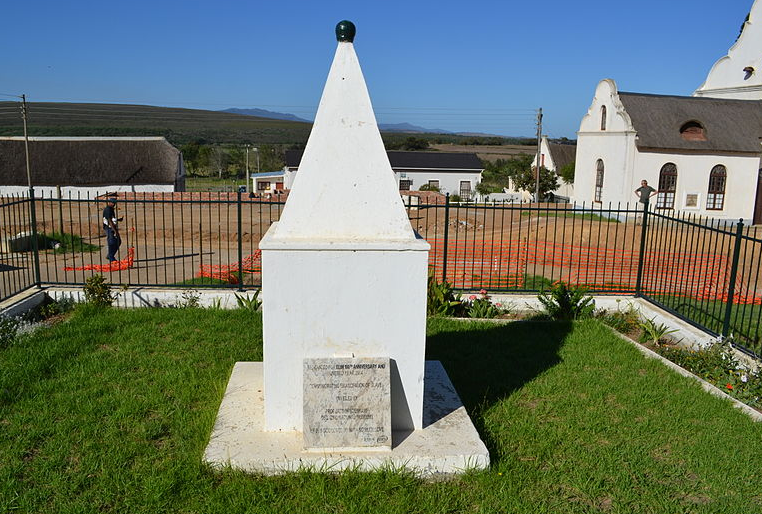
Slavery Emancipation Monument, Elim
Elim was initially a refuge for the indigenous Khoi people until it was taken over by hundreds of slaves. Most of its 1400 residents living there today are descendants of the slaves. In memory of emancipated slaves who found refuge at Elim in the Overberg, Western Cape, is the slavery emancipation monument. Elim, with its whitewashed thatched cottages, Moravian Church and the oldest working clock in South Africa, is a national treasure. When German missionaries arrived at the Cape the mission station at Elim was established in 1824. Biblically, Elim is the place the Israelites rested after crossing the Red Sea. This old monument in South Africa was first built in 1938 and was “re-unveiled” in 2004 after falling into disrepair in the 1990s. It was rebuilt in time to mark the United Nations declaration that 2004 was the year to celebrate the victory of humanity’s struggle against slavery.
Address: Slavery Emancipation Monument, Elim, SA.
Read More:Cities in South Africa
5. Constitution Hill, Johannesburg
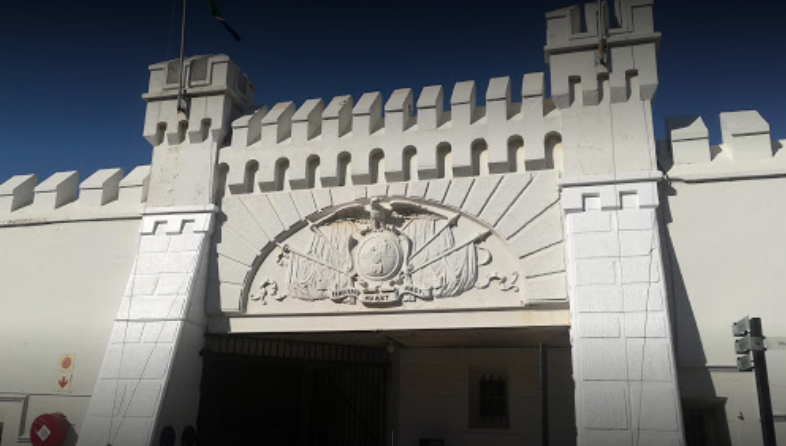
constittution Hill
The Constitutional Court has become a bastion of South African human rights and culture. Constitution Hill in Braamfontein, Johannesburg houses the highest court in the land – the Constitutional Court. But the history of the precinct is marred by pain and suffering. Before being transformed into the court, the hill housed The Fort. It was a notorious prison, with sections for “natives”, women, and awaiting trial prisoners. It housed common criminals together with ordinary citizens who were only guilty of breaking unfair apartheid laws. It was chosen as the home of the Constitutional Court in the mid-1990s. Other sections of this national monument in South Africa have also been transformed into memorial centres and museums, including the Women’s Gaol, Number Four, and the Old Fort.
Address: Constitution Hill, Johannesburg, SA.
Read More: Famous Monuments of Johannesburg
6. The Workers’ Library and Museum, Johannesburg
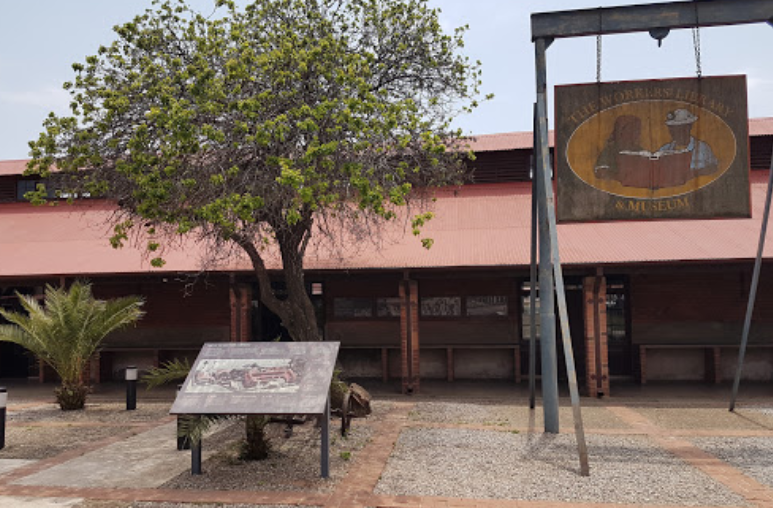
workers Library and museum
With the workmen’s quarters housing 396 men, there was no space for privacy. They slept in long rows of hard concrete “beds” next to one another. The Workers’ Library and Museum is housed in a restored municipal workers’ compound in Newtown. Built in 1913, this popular landmark in South Africa is the only intact example of an early municipal compound in Johannesburg. About 396 men who worked on the city’s electricity generating plant right on their doorstep, the workmen’s quarters housed all of it. Used until the 1970’s, the compound was renovated with one wing being developed as a museum and the other to house meeting rooms, offices and a library. The buildings were recognised as a National Monument in 1995, and an important part of working class heritage.
Address: The Workers’ Library and Museum, Johannesburg, SA.
Also Read:Facts about South Africa
7. Mandela House, Soweto
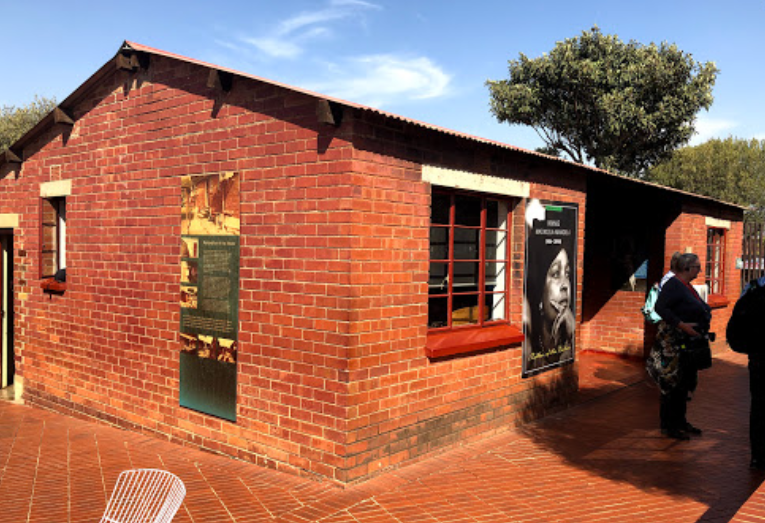
Mandela House, Soweto
Nelson Mandela’s humble first home has become a must-see spot when visiting South Africa. The house consists of four interconnected rooms and is filled with memorabilia and photographs of the family. Mandela moved into this house in 1946 with his first wife, Evelyn. After their divorce in 1957, he married Winnie Madikizela, who moved into the home with him. When he was released from prison in 1990, he returned to this home. But he only stayed in the house for 11 days. He donated it to the Soweto Heritage Trust in 1997 so it could be used as a museum and national monument in South Africa.
Address: Mandela House, Soweto, SA.
8. Heroes Park, East London

Heroes Park, East London
Heroes Park in East London incorporates three monuments that remember our freedom fighters and celebrates the country’s freedom and cultural diversity. Heroes Park in East London is a celebration of our freedom and the country’s cultural diversity not only honours South Africa’s struggle heroes. Situated across from the East London Aquarium, hundreds of struggle icons from poet and activist Dennis Brutus to Nelson Mandela are acknowledged, with their names etched into the granite Wall of Fame. Forming a large part of the memorial is the Multicultural Man statue, sculpted by Italian artist Francesco Perilli. Daily Dispatch described it as a monument that celebrated the history of the struggle and the country’s diversity. The Wall of Fame acknowledges struggle heroes and sporting icons who have links to the Eastern Cape. The three-metre-high statue is of a faceless man standing in the middle of Earth. Despite Heroes Park being a symbol of the country’s recent struggle for freedom, this historical landmark in South Africa also incorporates the German Settlers Monument, which pays homage to the German families who arrived in East London between 1856 and the 1870s.
Address: Heroes Park, East London, SA.
Don’t Miss:Best places to eat in South Africa
9. Memorial to the Six Million, Johannesburg

memorial to the six Million
Built in 1959, the monument was the brainchild of Herman Wald. Wald was born in Hungary and studied in Budapest, Vienna, Berlin and London. He moved to South Africa in 1937 where he lived and worked until his death. Memorial to the Six Million is one of Herman Wald’s many public sculptures that remain a part of South Africa’s cultural landscape. Memorial to the Six Million in Johannesburg’s Westpark Cemetery pays tribute to the Jewish men, women and children who lost their lives during the Second World War. This historical monument in South Africa depicts six bronze fists, each five feet high, bursting out of the ground as a protest from the dead. Each fist represents one million Jews who perished under Hitler. The twenty foot ram horns they hold depicts the Jewish ritual trumpet that blast out the sixth commandment “Though shalt not kill”. In pairs, the fists form the three arches of trials and tribulations that Jewish people have experienced over generations of persecution.
Address: Memorial to the Six Million, Johannesburg, SA.
10. Bhisho Massacre Memorial, Bhisho
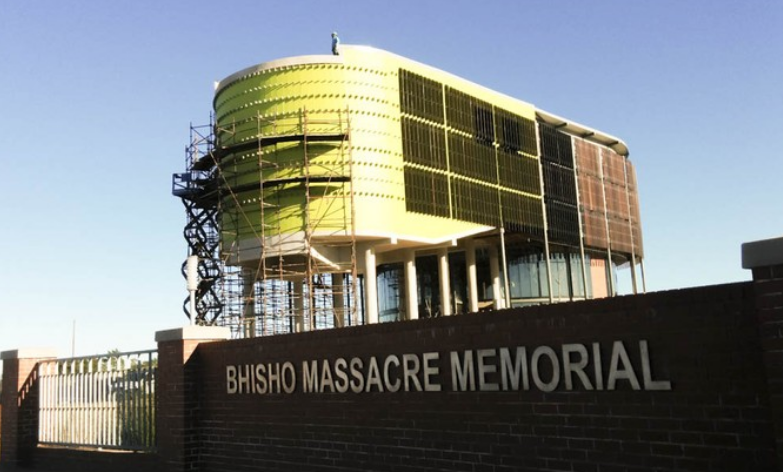
Bhisho Massacre Memorial, Bhisho
Twenty-eight marchers were shot and killed by the Ciskei Defence Force in what became known as the Bhisho Massacre. Drive south-west along the R63 in Bhisho, Eastern Cape, and you will come across the unique monument in South Africa, a face brick and granite structure that pays homage to the 28 marchers who were killed on 7 September 1992. On that day, about 80 000 people gathered outside Bhisho – the capital of Ciskei at the time – demanding an end to Oupa Gqozo’s military rule and the reabsorption of the so-called independent black homeland into South Africa. The marchers were led by top ANC and SACP officials, including Chris Hani, Cyril Ramaphosa, Steve Tshwete and Ronnie Kasrils. When they tried to pass the Ciskei Defence Force to enter Bhisho, Gqozo’s soldiers were instructed to open fire.
Address: Bhisho Massacre Memorial, Bhisho, SA.
Read More:What to do in China
11. Langa Memorial, Uitenhage
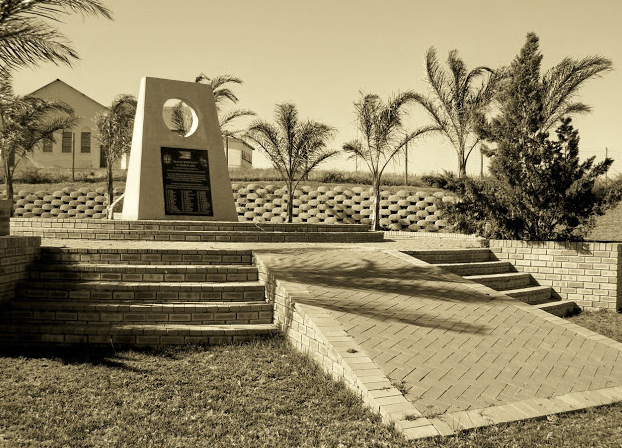
Langa Memorial, Uitenhage
The Langa Memorial, also known as Heroes Monument, in Uitenhage pays homage to the 20 marchers who were killed by police in 1985. Most South Africans are familiar with the Sharpeville Massacre that took place on 21 March 1960, a date that is now remembered as Human Rights Day. But another, little known, massacre took place on that very same date in Langa, Uitenhage, 25 years later.On 21 March, 1985, police fired at a group of marchers who were observing the 25th anniversary of the Sharpeville Massacre, killing 20 of them. According to historian Alistair Boddy-Evans, the incident occurred when marchers gathered in Langa and were preparing to move on to KwaNobuhle, 10 kilometres away, where the commemorative service for the 1960 massacre was to be held. But marchers did not know the government had banned the event. It was reason enough for the police to open fire. In memory of the 20 people who died on 21 March 1985 in Uitenhage in the Eastern Cape, this important monument in South Africa, also known as Heroes Monument, was unveiled in the KwaNobuhle Cemetery a year after the incident took place. The tombstone in the graveyard was vandalised in June 1987 and re-erected in March 1994.
Address: Langa Memorial, Uitenhage, South Africa.
12. Diggers Fountain, Kimberley
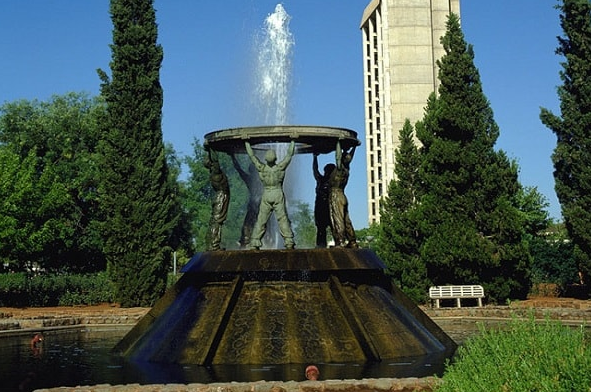
Diggers Fountain, Kimberley
A tribute to Kimberley’s diggers stands in the Ernest Oppenheimer Memorial Gardens. In 1871, the discovery of diamonds in Kimberley brought thousands of miners and fortune hunters to the small Northern Cape town, to try their luck at striking it rich. It still occupies an important position in the world diamond industry; the Miners Memorial, or Diggers Fountain, was installed in the Ernest Oppenheimer Memorial Gardens to mark the history of the town. The bronze sculpture portrays five men holding up a diamond sieve. This important landmark in South Africa was designed by Herman Wald in 1960, and stands as a tribute to all the diggers who congregated in the town.
Address: Diggers Fountain, Kimberley, SA.
13. Steve Biko statue, East London

Stieve Biko statue
The Steve Biko statue in East London pays homage to the leader of the Black Consciousness Movement leader who was killed while incarcerated. Look on the side of the Steve Biko statue outside the East London City Hall and you will find familiar names: musician Peter Gabriel, and actors Denzel Washington and Kevin Kline. These were just three of the many donors who made the statue possible. Washington and Kline depicted Biko and Donald Woods respectively in the 1987 film about the late Black Consciousness Movement leader, Cry Freedom. The statue honours Biko, whose activism helped to empower black South Africans to reclaim their dignity. This most popular monument in South Africa was defaced twice in the first three weeks after the unveiling. But today, it has been accepted as an important part of the city’s landscape. The statue is one of six landmarks along the Steve Biko Heritage Trail; the others are Biko Bridge in East London, his home in Ginsberg, the Steve Biko Garden of Remembrance just outside King William’s Town, his old Black Community Programmes office at 15 Leopold Street in King William’s Town, and Zanempilo Clinic in Zinyoka.
Address: Steve Biko statue, East London, SA.
Discover: Famous Monuments and Statues in New York
14. Hector Pieterson Memorial and Museum, Johannesburg
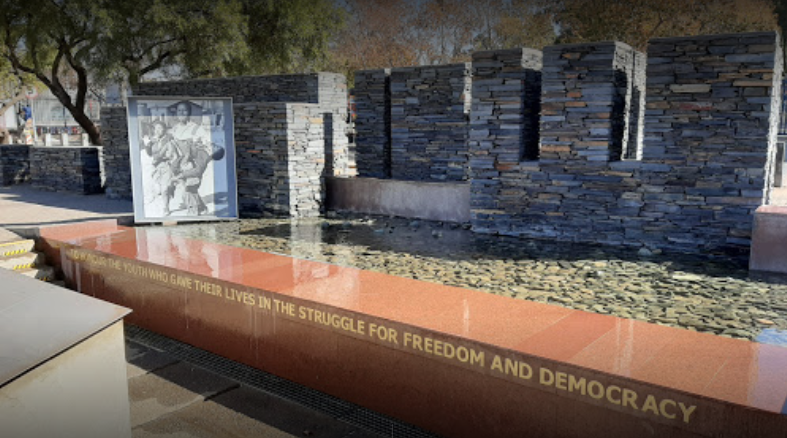
Hector Pieterson Memorial and Museum, Johannesburg
The Hector Pieterson Memorial and Museum honours those children who lost their lives in 1976. On 16 June 1976, at the age of 12, Hector Pieterson was shot by police during the student uprising in Soweto. Although not the first to be shot that was probably 15-year-old Hastings Ndlovu, he was the first to die. That morning, Soweto’s schoolchildren were marching against being taught in Afrikaans at schools. When they reached Maseko Street, police opened fire. Today, the Hector Pieterson Memorial and Museum is a testament to their struggle to end apartheid. Nzima’s photo is central to this historical monument in South Africa.
Address: Hector Pieterson Memorial and Museum, Johannesburg, SA.
15. The Gallows, Pretoria Central Prison
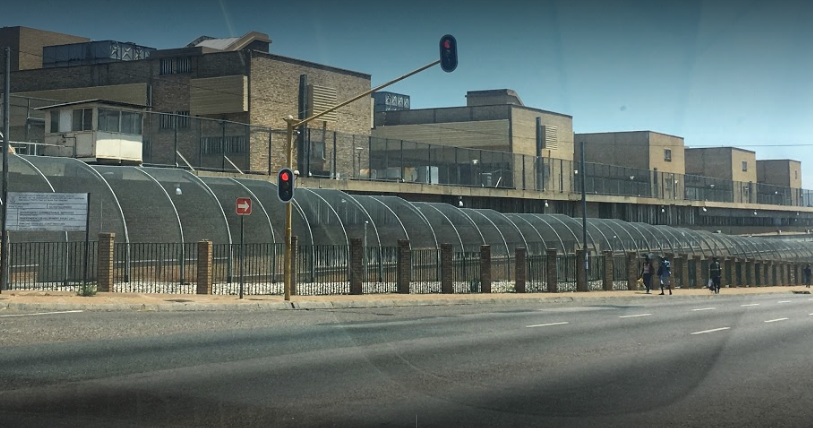
The Gallows, Pretoria Central Prison
Described by “Saturday Star” as South Africa’s “factory of death”, the gallows at Pretoria Central Prison saw more than 3 500 hangings. This image was taken at the Apartheid Museum’s exhibition of the gallows. The 131 nooses shown represents the number of anti-apartheid activists who were hanged there. The gallows of the Pretoria Central Prison opened in December 2011 in memory of the political prisoners who were executed during 1967 and 1989. At this centre’s opening, families of the deceased said their healing has started. According to Wikipedia, the prison’s official name is Kgosi Mampuru II Prison. More than 100 political prisoners were executed here during apartheid. Executions took place on Saturdays and were viewed by the public.
Address: The Gallows, Pretoria Central Prison, Pretoria, South Africa.
16. The Unknown Miner, Johannesburg
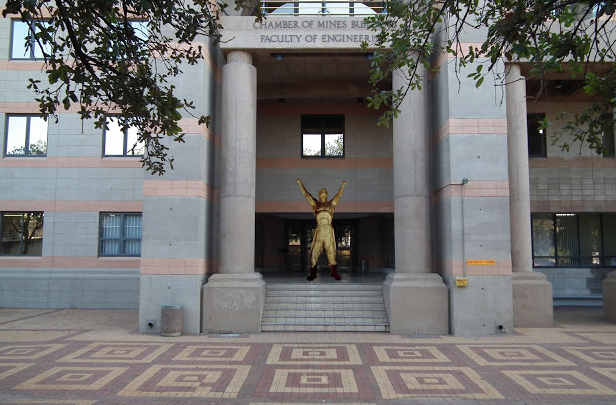
The unkown minor
The Unknown Miner is a casting of the original prototype of The Diamond Diggers sculptor Herman Wald created in the 1950s. This historical landmark in South Africa stands at Wits University in Johannesburg. The Chamber of Mines building for the Engineering and the Built Environment Faculty at the University of Witwatersrand’s (Wits) is not just the home for students and staff of these departments. It is also the home of Herman Wald’s. The Unknown Miner for more than three years. According to the website hermanwald.com, the monument was erected to recognise the hard work of the unacknowledged miners of Johannesburg that established the ‘City of Gold’ in 1886. In the late 1950s, Harry Oppenheimer commissioned Wald [1906 – 1970], a sculptor, to create two works to celebrate the life and achievement of his father, Sir Ernest Oppenheimer. One was The Diamond Diggers situated in Kimberley, and the other was The Stampede, otherwise known as The Impala Fountain, in Johannesburg.
Address: The Unknown Miner, Johannesburg, SA.
Read More: Best places to eat in China
17. Robben Island Museum, Cape Town
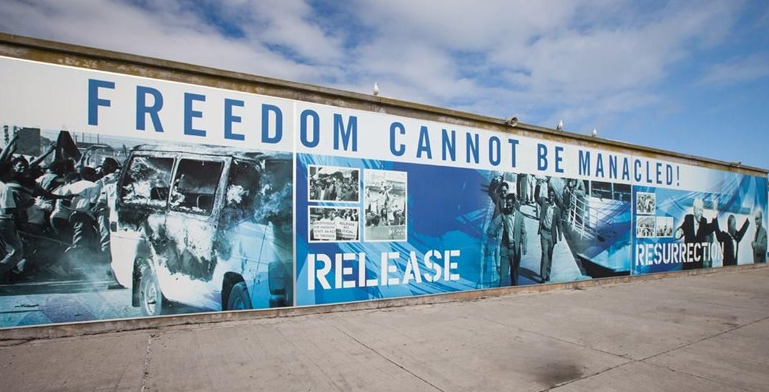
Robben island Museum
Robben Island is best known for its prison which held several political activists including Nelson Mandela, Robert Sobukwe and South Africa’s current president Jacob Zuma (Image: Brand South Africa). Robben Island has a varied history. From the 1400s to 1900s, travellers, sailors and settlers used it as a base to replenish food and supplies; it was also used as a post office, a quarantine station, a hospital, and prison. But this top monument in South Africa is best known as the site where Nelson Mandela was imprisoned for 18 years. He was in prison for a total of 27 years, but was transferred from The Island, as the prison was known, to Pollsmoor and then Victor Verster prisons in Cape Town and Stellenbosch, respectively. Robben Island was declared a National Monument in 1996 and a National Museum in 1997.
Address: Robben Island Museum, Cape Town, SA.
All of the mentioned above places are the top monuments in South Africa which are very famous in South Africa as they are related to any historical event which has happened in the past, all of the monuments are must to visit on your trip to this nation. Hope the post is beneficial to you kindly read our other blog also if you want to know more about South Africa.
The post Famous Monuments in South Africa | Most Visited Monuments in South Africa appeared first on World Tour & Travel Guide, Get Travel Tips, Information, Discover Travel Destination | Adequate Travel.